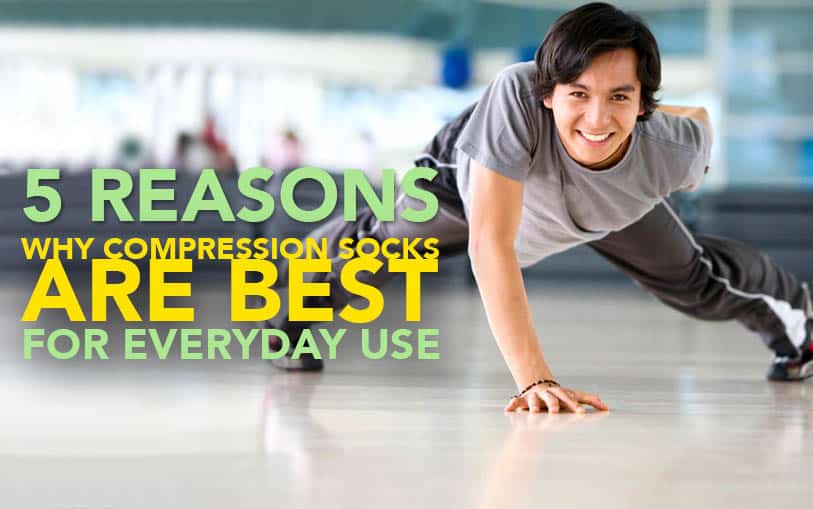
Compression socks and leg sleeves are arguably more popular now than they’ve ever been, despite long being a familiar and accepted way to treat various maladies. Many mainstream brands are getting in on the act and producing their own unique twists and spins on the usual formula, all having something in common: the design. Compression socks, as the name suggests, are designed to tightly bind the legs, with fabric that presses them tightly together. There are many benefits to wearing these types of socks, which more and more people are discovering.
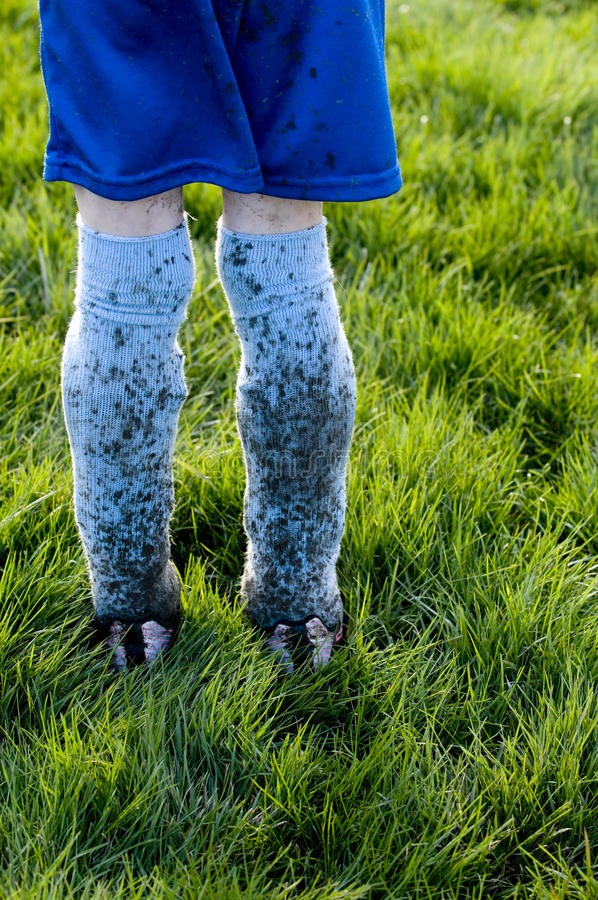 Just like any other sock, a compression sock would cover your feet and even your legs, offering a layer of protection from dust and scratches. If this seems like a frivolous thing to want socks to provide, consider that you’d run into a lot of these when you’re out. Even basic jogging or trekking exposes your legs to a great deal of pollution and environmental factors, depending on where you jog or trek. City trails will have loads of dust and vehicular pollution, while trails off the beaten urban path might have scratchy brambles and even poison ivy. Even indoors, abrasive mats and the like would wreak havoc on your limbs, but this effect can be drastically reduced with a layer of protection such as the kind provided by compression attire. Who wants that on their legs when all they want is a good and thorough workout? It’s often best to pull on a pair of compression socks that, while not sealing your legs perfectly off from the outside world, will at least provide a degree of separation from dirt and scratchy, ineffective things.
Just like any other sock, a compression sock would cover your feet and even your legs, offering a layer of protection from dust and scratches. If this seems like a frivolous thing to want socks to provide, consider that you’d run into a lot of these when you’re out. Even basic jogging or trekking exposes your legs to a great deal of pollution and environmental factors, depending on where you jog or trek. City trails will have loads of dust and vehicular pollution, while trails off the beaten urban path might have scratchy brambles and even poison ivy. Even indoors, abrasive mats and the like would wreak havoc on your limbs, but this effect can be drastically reduced with a layer of protection such as the kind provided by compression attire. Who wants that on their legs when all they want is a good and thorough workout? It’s often best to pull on a pair of compression socks that, while not sealing your legs perfectly off from the outside world, will at least provide a degree of separation from dirt and scratchy, ineffective things.
2. CLEANLINESS
Related to the protection benefit is the fact that dirt and the like would 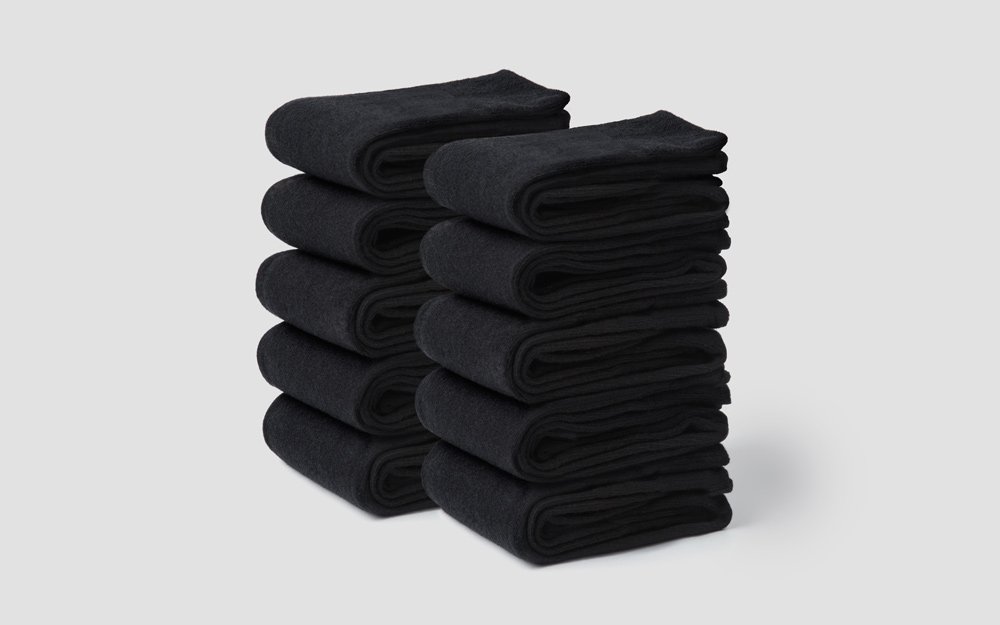 collect on your compression sleeves and socks, rather than your legs. Rolling around on mats with dirt and sweat on them is hardly ideal, but it’s part of what we do. Shrugging it off has always been the default response – how else are you going to train if you don’t learn to not sweat the small things? – but it doesn’t hurt to keep your legs clear of such distractions. After all, even though you’re certainly going to clean up and shower afterwards regardless, it might be nice to have to scrub a little less because your legs aren’t caked with dust and dirt from the training session. (This, however, might make white a less than ideal color for the compression socks you’ll buy.)
collect on your compression sleeves and socks, rather than your legs. Rolling around on mats with dirt and sweat on them is hardly ideal, but it’s part of what we do. Shrugging it off has always been the default response – how else are you going to train if you don’t learn to not sweat the small things? – but it doesn’t hurt to keep your legs clear of such distractions. After all, even though you’re certainly going to clean up and shower afterwards regardless, it might be nice to have to scrub a little less because your legs aren’t caked with dust and dirt from the training session. (This, however, might make white a less than ideal color for the compression socks you’ll buy.)
3. WARMTH
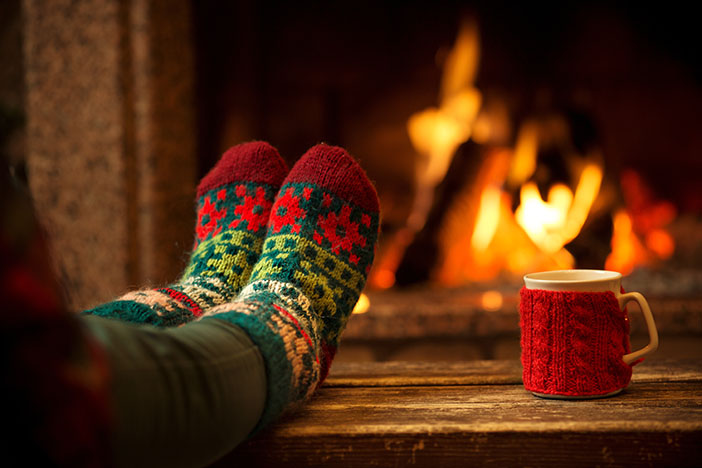 This is a benefit that can actually be felt whether training or not. Weather can be awkward sometimes, giving us circumstances where we’d like to wear shorts but the cold outside makes it more ideal to wear pants. Of course, this works well and fine until we go indoors, where it’s a little stuffy for pants. Enter compression socks, which because of their tight-knit (well, not actually knit per se) design and fabrication – not to mention the actual fabric used – can provide a subtle warming effect. Just put them on and your extremities will be toasty warm under average cold circumstances.
This is a benefit that can actually be felt whether training or not. Weather can be awkward sometimes, giving us circumstances where we’d like to wear shorts but the cold outside makes it more ideal to wear pants. Of course, this works well and fine until we go indoors, where it’s a little stuffy for pants. Enter compression socks, which because of their tight-knit (well, not actually knit per se) design and fabrication – not to mention the actual fabric used – can provide a subtle warming effect. Just put them on and your extremities will be toasty warm under average cold circumstances.
Needless to say, training areas can get a bit nippy as well, and there are people who can be more affected by air conditioning than others. If that includes you, then you might benefit from the additional layer of warmth offered by compression socks.
4. IMPROVED BLOOD AND FLUID FLOW
One of the most widely known benefits of compression attire in general, and compression socks in particular, is the way they improve blood flow and prevent fluid from pooling. Nurses wear compression socks a lot because they’re always on their feet, and standing on your feet for long periods of time is sure to give you circulation problems.
 Compression socks are designed to have the greatest degree of compression or tightness at the bottom, and gradually reduce in tightness as they go up. This ensures improved circulation in the leg area, where oxygen-rich blood is funneled more efficiently toward and through the legs while deoxygenated blood can travel back to the heart more quickly. Without adequate blood flow, calves and shins can swell up because fluid can gather there over time (thanks to gravity and static positioning). This can be avoided through the use of compression socks and leg sleeves, sparing leg muscles from swelling and discomfort caused by poor blood circulation and pooling fluid.
Compression socks are designed to have the greatest degree of compression or tightness at the bottom, and gradually reduce in tightness as they go up. This ensures improved circulation in the leg area, where oxygen-rich blood is funneled more efficiently toward and through the legs while deoxygenated blood can travel back to the heart more quickly. Without adequate blood flow, calves and shins can swell up because fluid can gather there over time (thanks to gravity and static positioning). This can be avoided through the use of compression socks and leg sleeves, sparing leg muscles from swelling and discomfort caused by poor blood circulation and pooling fluid.
One other issue prevented by compression socks and leg sleeves is the potential for blood clots in the legs, also called DVT or deep vein thrombosis. The risk of having this happen is raised considerably when one undertakes prolonged standing, especially in one position, or even prolonged bed rest, as well as other factors like the use of birth control medication and a family history for it. While the jury is out on how conclusively compression socks prevent this, many anecdotal reports indicate that people wearing these socks don’t tend to worry about this happening.
5. DECREASED SWELLING
Finally, the most familiar and most popular benefit of compression socks 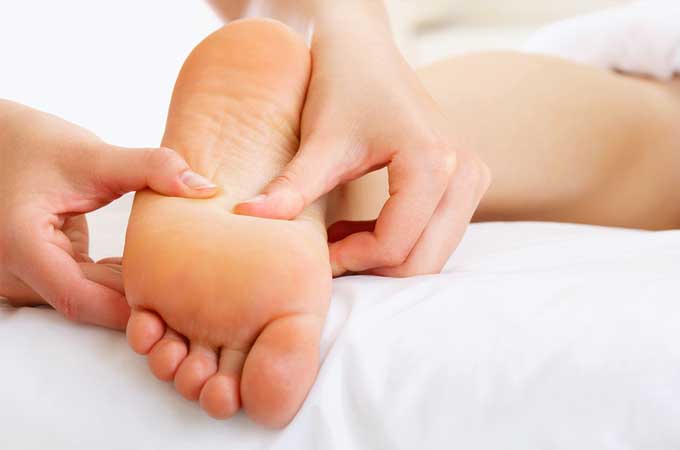 is that they reduce swelling. While yes, various studies have proven inconclusive on this count, many users of compression socks and leg sleeves point to simply feeling better and more confident because of decreased leg fatigue after a workout. This, they claim, has allowed them to work out for longer, push themselves harder, and more, thus getting more out of each workout.
is that they reduce swelling. While yes, various studies have proven inconclusive on this count, many users of compression socks and leg sleeves point to simply feeling better and more confident because of decreased leg fatigue after a workout. This, they claim, has allowed them to work out for longer, push themselves harder, and more, thus getting more out of each workout.
Compression has always been a highly touted treatment for inflammation (it’s the C in RICE – rest, ice, compression, elevation). The improved blood flow and snug packing of the muscles allows the body to minimize fatigue and recover faster, and it’s this benefit that is brought forward to everyday use by compression socks.
To know more about compression socks, click here.